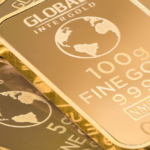Introduction to Fundamental Investment Concepts
The Importance of Understanding Investment Terminology
Literally hundreds of investment terms commonly populate the everyday investment world, which can overwhelm beginning investors. Key to making informed decisions is understanding investment terminology. The following article addresses some basic products such as Global Equities, Exchange Traded Funds (ETFs), Market Capitalization, and Index Funds. We provide links that will direct you to more extensive discussions on each product.
Overview of Global Equities
A global equities portfolio comprises securities from both the United States and international stock markets. It distinguishes itself from an international equities portfolio, which holds stocks from companies outside of the United States. The Hemispheres Global Equities product includes emerging market securities, enhancing returns and portfolio diversification benefits. For a more in-depth analysis of diversification through global equity strategies and risk-reducing diversification strategies, please refer to the link below[1].
[1] https://hemispheresim.com/strategic-diversification-and-risk-management-in-global-equities-investing/
Exchange-Traded Funds (ETFs)
What is an ETF?
An ETF is an investment fund that trades on stock exchanges. It can hold investments like stocks, bonds, cash, or other financial assets. Most listed ETFs fall into either index or sector funds categories. A passively managed ETF typically includes most or all of the stocks in an index, aiming to mirror the performance and risk characteristics of that index. ETFs trade like stocks and allow buying or selling at any time during the market hours. Mutual funds, can only be bought or sold at the end of a trading day. For more information, including the advantages and limitations of ETF investing, please click on the link below.[1]
[1] https://hemispheresim.com/global-equities-or-exchange-traded-funds-which-is-the-right-choice-for-you/
Benefits of ETFs in a Global Equity Portfolio
Global Equities represent stocks of exchange-listed companies from over 45 developed and emerging market countries. The Morgan Stanley Capital International’s All Country World Index (ACWI) serves as the appropriate reference point for global investing, encompassing approximately 85% of global investible stocks with an aggregated market value of around $70 trillion and comprising about 2,900 companies. According to Bloomberg, there are over 15,000 companies with a market valuation exceeding $500 million, compared to approximately 2,600 such companies listed on U.S. stock exchanges. Thus, Global Equities offer investors a remarkable opportunity to directly invest in attractively valued companies. There are Global Equity ETFs, primarily passively managed, that invest in an index such as the MSCI or a specific country’s stock market.
Hemispheres Investment Management operates as an active manager. The Hemispheres Global Equites Portfolio typically holds positions in 45 – 50 individual market-leading or high-quality global firms. Occasionally, Hemispheres opportunistically invests in global sector-specific or country-specific ETFs. Selection of all portfolio holdings is based on both return potential and diversification benefits.
Understanding Market Capitalization
Market Capitalization, often referred to as Market Cap, denotes the market value of a company’s equity. The calculation of market cap involves multiplying the current share price by the number of shares outstanding. Market cap fluctuates with daily price movements in the stock price. Major market cap weighted indices such as the S&P 500 employ float-adjusted market cap.
The determination of float-adjusted market capitalization involves multiplying the company’s stock price by the number of shares publicly traded. In the open market, locked-in or inactive shares, such as those held for the benefit of company insiders or unexercised options, do not trade actively.
Categories of Market Capitalization
Market capitalization categorizes companies based upon their size.
- Mega-Cap companies have market cap greater than $200 Billion.
- Large-Cap companies market cap generally ranges between $10 Billion and $200 Billion.
- Mid Cap companies market cap generally ranges between $2 Billion to $10 Billion.
- Small cap companies market cap generally ranges between $200 million and $2 Billion.
Importance of Market Cap
Large-Cap
Investors often favor large-cap stocks for their perceived lower risk, stemming from their status as industry-leading entities with stable earnings, cash flow and dividend growth. Despite historically slower growth, these companies boast high daily trading volumes. They are particularly attractive to investors nearing retirement, who may sell stock to cover living expenses at favorable prices. Stocks with low trading volumes often result in less favorable trade execution.
However, in recent years, many technology stocks have ascended to the realm of large cap stocks. Any decision to include these stocks in portfolios of individuals nearing retirement age requires careful fundamental analysis. Many of these stocks offer disruptive technologies that will result in changes in the way our society functions, however the time horizon may be inappropriate for an investor nearing retirement.
Mid-Cap
Mid-cap companies typically have higher growth expectations compared to large-cap companies. They may possess proprietary products that enhance competitiveness or market share within specific industries. Additionally, mid-cap companies often carry less perceived risk than small-cap companies due to their greater access to capital for funding growth. Conducting fundamental analysis remains crucial to assess the suitability of adding a specific stock to the fund.
Small-Cap
Small-Cap stocks operate within newer life-cycle industries, such as artificial intelligence, or in niche markets like biotechnology. While these firms may possess highly promising products and excellent growth prospects, they might not yet be profitable, and accessing capital may be limited. Consequently, Small Cap stocks are generally perceived as having higher risk.
At Hemispheres, we adopt a multi-cap value investment approach. For a more comprehensive overview of market capitalization risk and the strategic value in asset allocation decisions, we encourage you to explore further resources.[1]
[1] https://hemispheresim.com/the-role-of-market-capitalization-in-global-equity-fund-selection/
What is an Index Fund?
An index fund is a pooled investment vehicle wherein the portfolio holdings, position weightings, and returns closely mirror a broad market index. Stakeholders typically invest in an index fund either through a mutual fund or an exchange-traded fund (ETF). It’s important to note that an investor cannot directly purchase the index itself.
Common examples of investible index funds track indices such as the S&P 500, the Dow Jones Industrial Average, the Russell 2000 Index, the MSCI All Country World Index, or the Barclays Aggregate (for bonds). There is a wide array of funds covering various indices, sectors, and asset classes available to investors.
The fundamental concept behind an index fund is its passive investment strategy. The security weights in the fund mirror the index weights, making it a buy-and-hold approach. Unlike active strategies, the index funds do not aim to predict which stocks or sectors will outperform the index. Instead, the goal is to match the index return. Due to small fees assessed by the fund, the performance of the fund often slightly underperforms the index itself. However, the simplicity of the index fund concept, the cost efficiency of passive management, and the broad diversification of holdings make index funds attractive to many investors.
Hemispheres is a global value investment manager, known for its active management style. The Hemispheres Investment Management team often holds positions in 45 – 50 individual market-leading or high-quality global firms within the Global Equities Portfolio. While the preference is for individual stock investments, Hemispheres occasionally allocates funds opportunistically to country index ETFs. All portfolio holdings are carefully selected based on their return potential and diversification benefits.
We invite you to click on the link below to read our full article on Introduction to Index Funds. In the article, we delve into index mechanics, cost efficiency, and provide a comparison of Hemispheres’ historical returns versus index funds, along with disclosures for your information[1].
[1] https://hemispheresim.com/spotlight-on-index-funds-enhancing-global-equities-strategies/
Conclusion
We encourage you to deepen your investment knowledge by exploring these fundamental concepts further and reading the full articles available by clicking on the links provided. Should you have any questions or wish to discuss these concepts further, we are more than happy to assist you. Hemispheres Investment Management offers free consultations to help you develop your investment plan. Feel free to book a meeting with us at any time.
Rebecca K. Holden, CFA
Michael A. Hart, CFA






